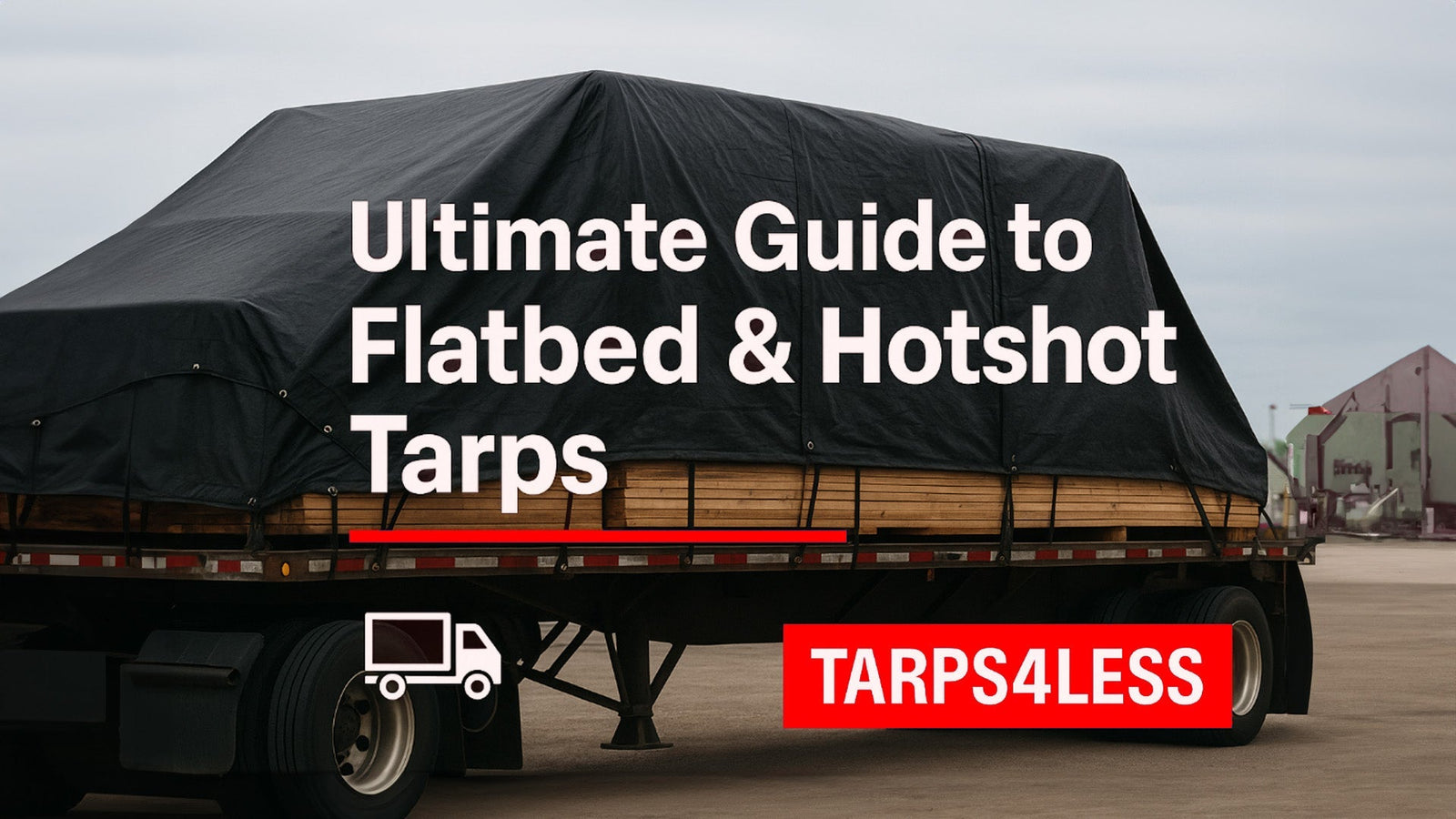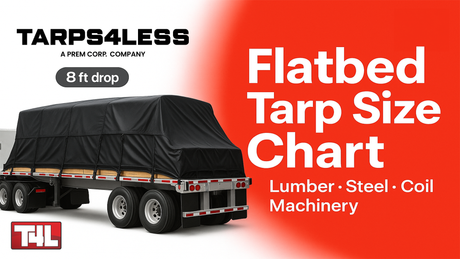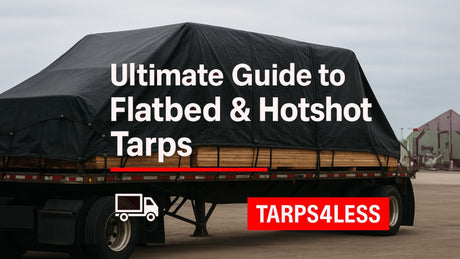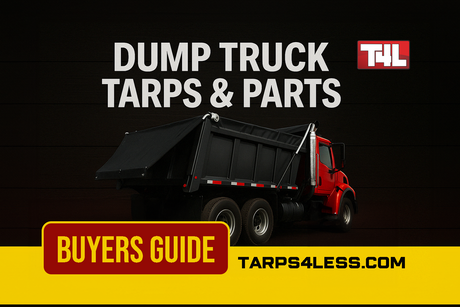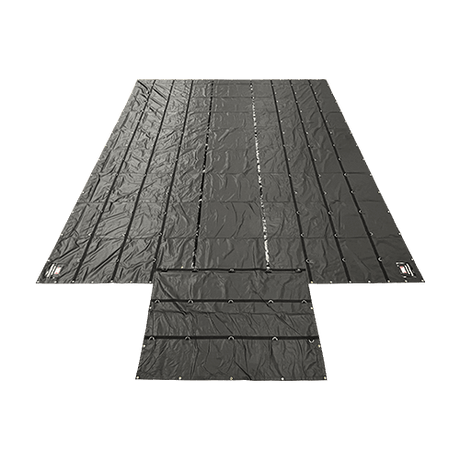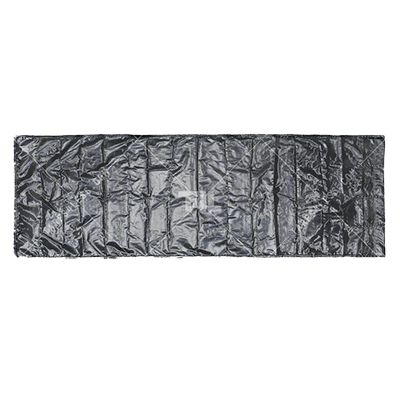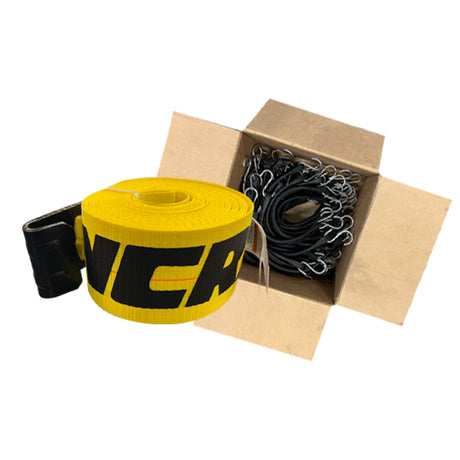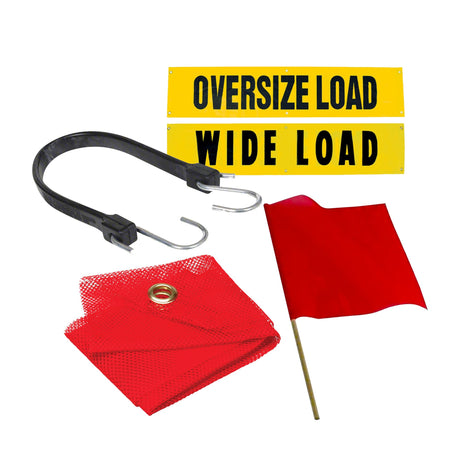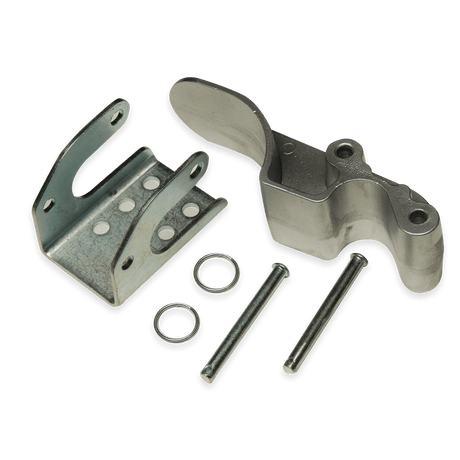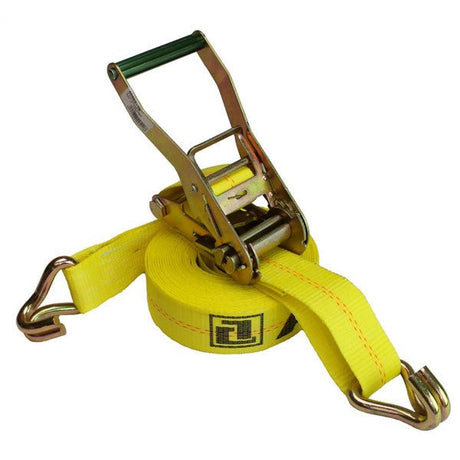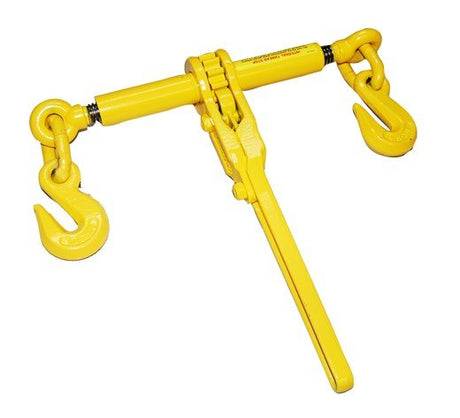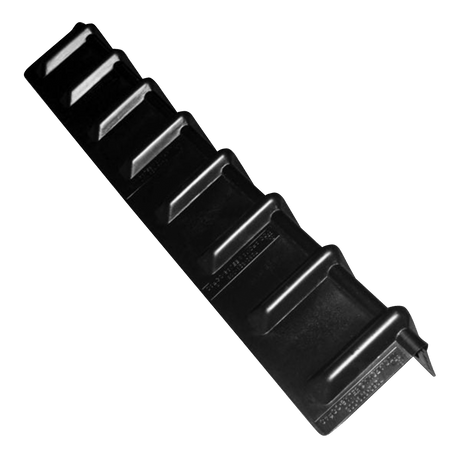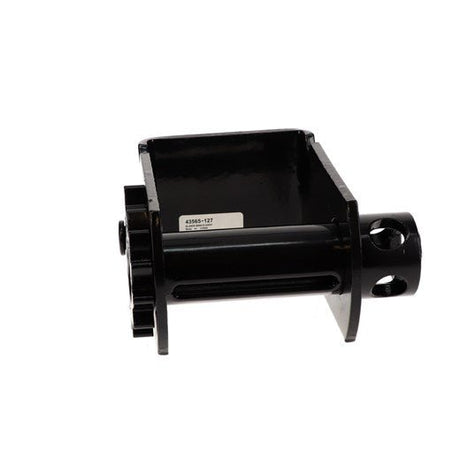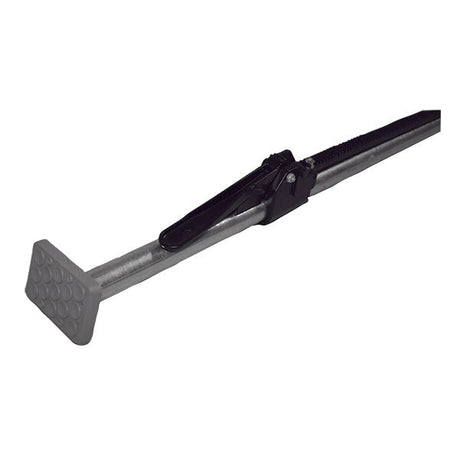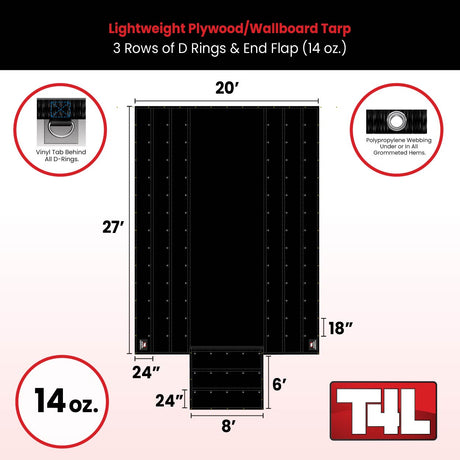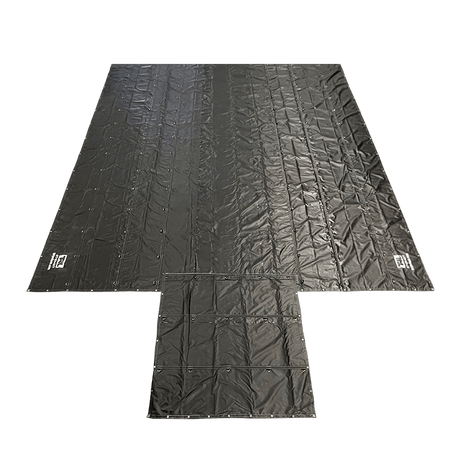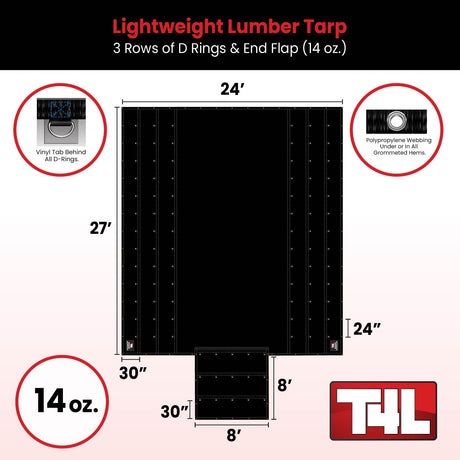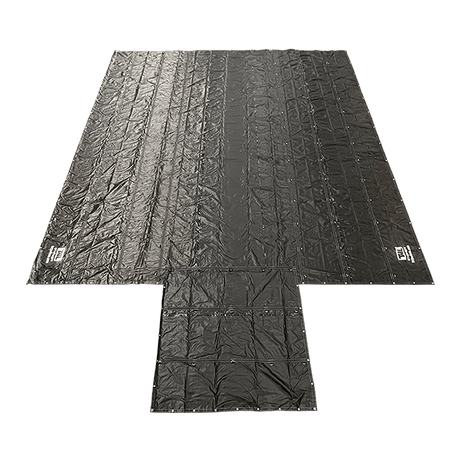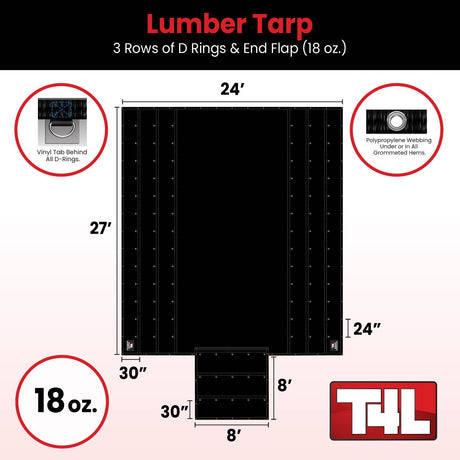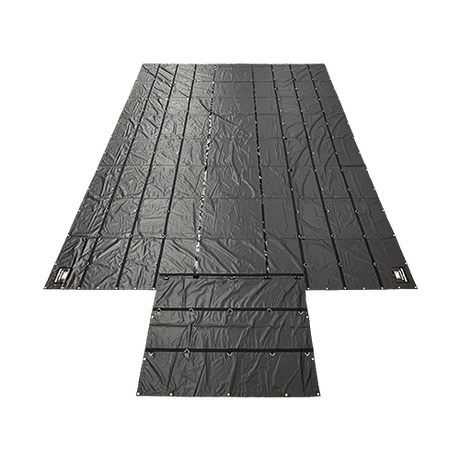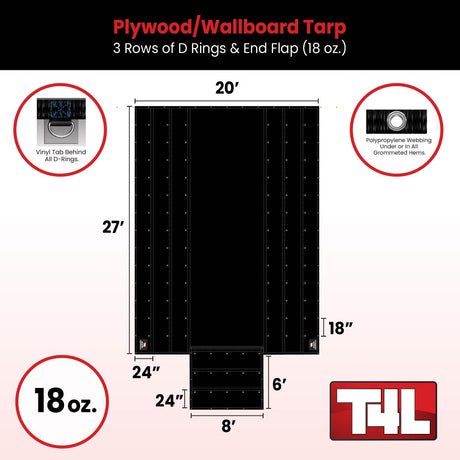Ultimate Guide to Flatbed & Hotshot Tarps
Master the art of cargo protection with our comprehensive 2025 guide. From sizing calculations to product selection, we'll help you choose the perfect tarp for your flatbed or hotshot operation.
Calculate Your Tarp SizeWhy the Right Tarp Makes All the Difference
In the demanding world of flatbed and hotshot trucking, your tarp isn't just a cover—it's your cargo's lifeline against the elements, your compliance shield against regulations, and your profit protector against damage claims. Whether you're hauling lumber across state lines or steel coils to construction sites, the difference between a mediocre tarp and a premium one can mean the difference between a profitable run and a costly disaster.
Industry Insight
Professional drivers who invest in quality tarps report 40% fewer cargo damage claims and save an average of 15 minutes per load on deployment time. Over a year, this translates to significant cost savings and increased earning potential.
Mastering Tarp Sizing: The Foundation of Cargo Protection
Proper tarp sizing is both an art and a science. Get it wrong, and you'll either struggle with excess material that catches wind and creates dangerous driving conditions, or find yourself with insufficient coverage that leaves your cargo exposed to the elements.
Understanding Drop Measurements
The "drop" measurement—how far your tarp hangs down the sides of your trailer—is crucial for proper coverage. Most flatbed tarps come with either 6-foot or 8-foot drops, and choosing the right one depends on your trailer height, cargo profile, and tie-down preferences.
FLATBED TARPSIZE CALCULATOR
Enter your load dimensions and we'll recommend the ideal tarp category & size.
Enter the length of your load in feet, between 4 and 53.
Enter the height of your load in feet, between 1 and 14.
Enter the side overhang in inches, between 0 and 24.
- Width = trailer 8.5 ft + (height × 2) + overhang
- Length = load length + 2 ft slack
If no single tarp fits, we suggest twin 24×27 lumber tarps or a specialty cover.
Quick‑Look Flatbed Tarp Size Chart
| Load Type | Height | Best Size | Drop | Wt (18 oz) |
|---|---|---|---|---|
| Steel coils / plate | ≤4 ft | 16 × 20 ft | 4 ft | ≈ 65 lb |
| Plywood / wallboard | ≤6 ft | 20 × 27 ft | 6 ft | ≈ 81 lb |
| Lumber / wallboard | ≤8 ft | 24 × 27 ft | 8 ft | ≈ 110 lb |
| Machinery (tall) | ≤10 ft | 30 × 30 ft | 10 ft | ≈ 155 lb |
Hotshot-Specific Considerations
Hotshot operations present unique challenges that standard flatbed sizing charts don't always address. The shorter wheelbase, different weight distribution, and often irregular cargo shapes require a more nuanced approach to tarp selection.
| Trailer Type | Typical Length | Recommended Tarp Size | Drop Preference | Special Considerations |
|---|---|---|---|---|
| Standard Flatbed | 48-53 ft | 24' x 27' | 8 ft | Full coverage, wind resistance |
| Hotshot Gooseneck | 20-25 ft | 20' x 27' | 6 ft | Neck clearance, quick deployment |
| Step Deck | 48-53 ft | 24' x 27' | 8 ft | Multi-level coverage |
| Hotshot Bumper Pull | 16-20 ft | 16' x 26' | 6 ft | Compact storage, easy handling |
Material Science: Choosing the Right Tarp Construction
The material composition of your tarp determines everything from its lifespan to its performance in extreme weather conditions. Modern truck tarps utilize advanced polymer technologies that offer superior strength-to-weight ratios, UV resistance, and flexibility.
| Material Type | Weight (24x27) | Weather Protection | Durability | Best Applications | Price Range |
|---|---|---|---|---|---|
| 18 oz Vinyl | 108-120 lbs | Excellent | 5+ years | Finished goods, electronics | $329-449 |
| Lightweight Vinyl | 76-92 lbs | Very Good | 3-4 years | General freight, lumber | $294-314 |
| Mesh (10 oz) | 45-60 lbs | Good | 3-5 years | Steel, construction materials | $195-285 |
| Hybrid Mesh/Vinyl | 85-95 lbs | Very Good | 4-5 years | Mixed loads, versatile use | $385-450 |
Common Mistake
Many drivers choose tarps based solely on price, ignoring the total cost of ownership. A cheaper tarp that needs replacement every 18 months costs more in the long run than a premium tarp that lasts 4-5 years with proper care.
Featured Flatbed & Hotshot Tarps
Based on our extensive testing and customer feedback, we've curated a selection of the most reliable and cost-effective tarps for different applications. Each of these products has been proven in real-world conditions by professional drivers.

- 6ft Drop, End Flap
- 3 Rows of D-Rings
- 76 lbs total weight
- Perfect for hotshot operations
- UV-resistant vinyl construction
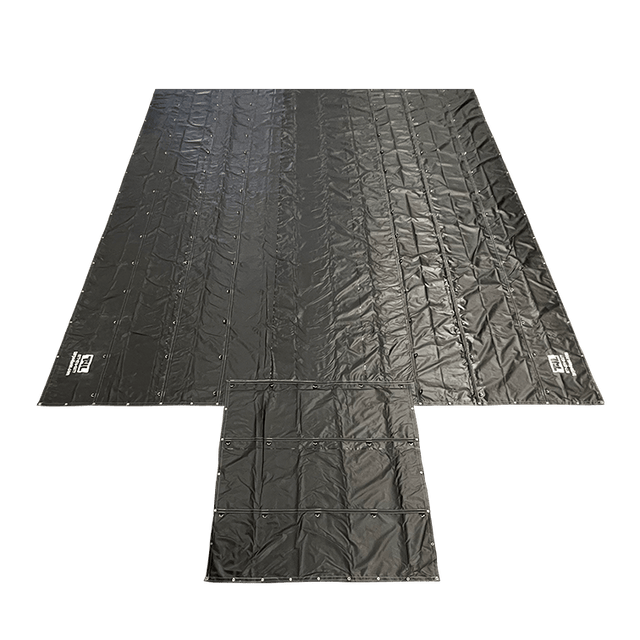
- 8ft Drop, End Flap
- 3 Rows of D-Rings
- 90 lbs total weight
- Standard flatbed coverage
- Heat-sealed seams
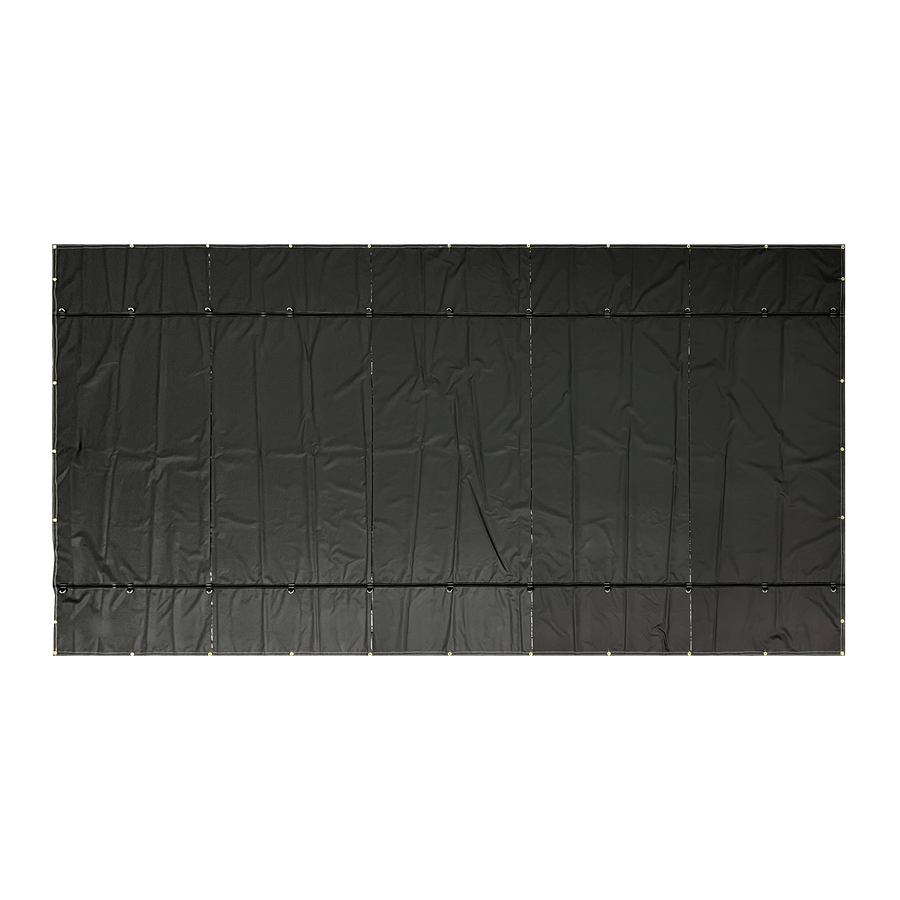
- Heavy-duty mesh construction
- 1 Row D-ring configuration
- Lightweight and durable
- Perfect for steel coils
- Wind-resistant design
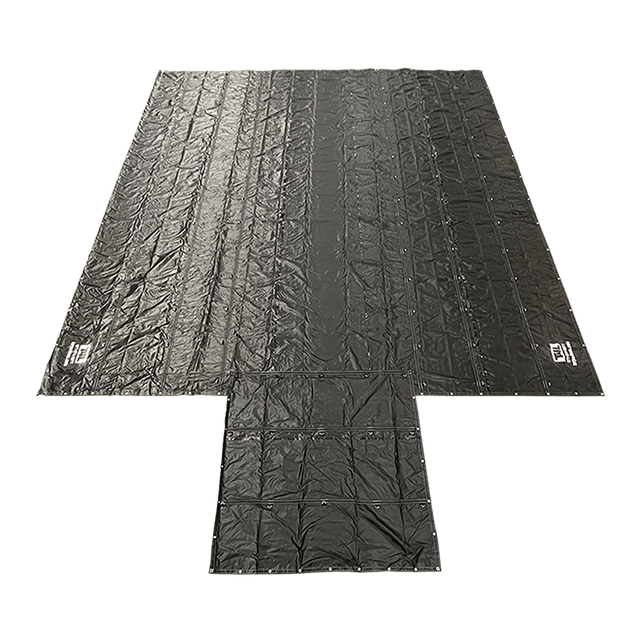
- 8ft Drop, 3 Rows D-Rings
- 108 lbs - Heavy duty construction
- Superior weather protection
- Reinforced stress points
- 5+ year lifespan
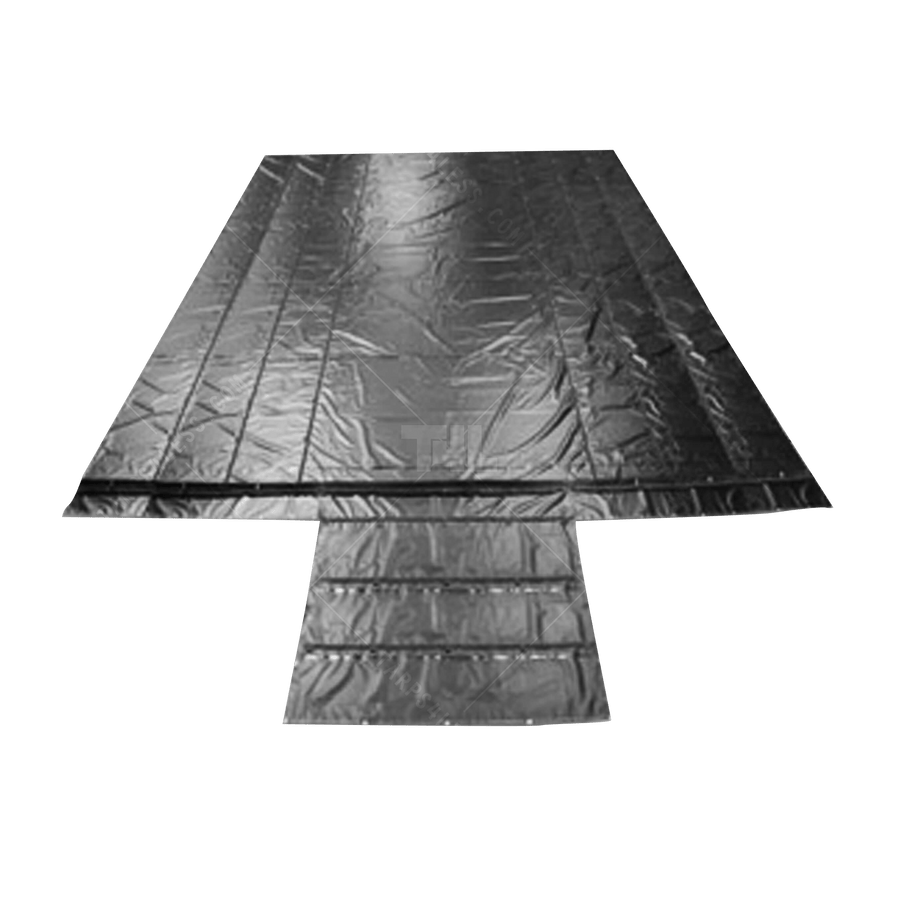
- 18 oz vinyl construction
- Available in 4 colors
- 3 Rows of D-rings
- Perfect for drywall loads
- Professional grade quality
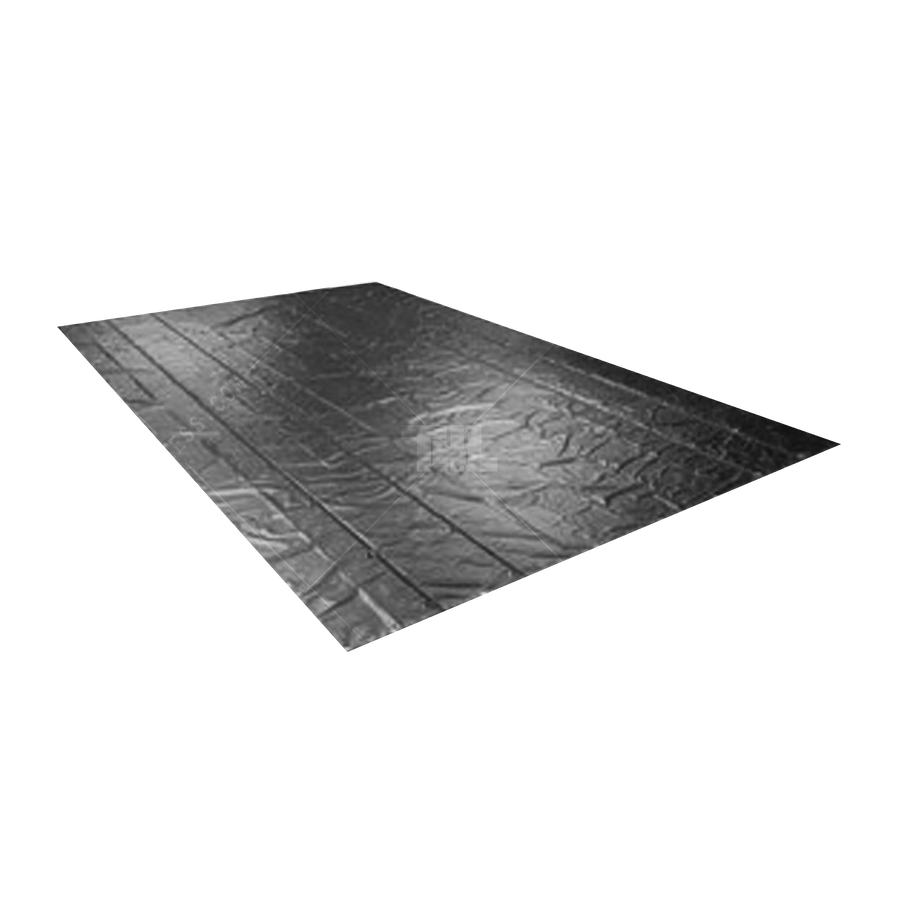
- 18 oz premium vinyl
- Extended length coverage
- No end flap design
- Maximum cargo protection
- Professional grade construction
Quick Comparison
Vinyl: Heavy-duty, winter-proof, complete weather protection
Mesh: Lightweight, wind-resistant, allows air circulation
Hybrid: Best of both worlds - our top seller for versatile operations!
Deployment Techniques & Time-Saving Tips
Efficient tarp deployment isn't just about speed—it's about developing a systematic approach that ensures consistent coverage while minimizing physical strain and safety risks. Professional drivers who master these techniques can reduce their tarping time by 50% or more.
The 5-Minute Deployment Method
Professional drivers swear by this systematic approach that breaks down tarp deployment into manageable steps. By following this method consistently, you'll develop muscle memory that makes tarping second nature, even in challenging conditions.
| Step | Action | Time | Pro Tip |
|---|---|---|---|
| 1 | Position & unfold tarp | 60 sec | Start from the cab end, work backward |
| 2 | Secure front corners | 45 sec | Use quick-release bungees for speed |
| 3 | Pull over cargo | 90 sec | Work in sections, don't rush |
| 4 | Secure sides & rear | 120 sec | Maintain consistent tension |
| 5 | Final inspection | 25 sec | Check for loose spots or tears |
Hotshot Pro Tip
Use a low-profile cam buckle strap on your hotshot to cut deployment time in half—no more wrestling with slack webbing! Pre-stage your hardware by keeping cam-buckle straps threaded and hooked at the corners.
Weather-Specific Deployment Strategies
Different weather conditions require different approaches to tarp deployment and securement. Understanding these variations can mean the difference between a successful delivery and a roadside emergency.
Winter Operations
Cold weather presents unique challenges for tarp deployment. Vinyl becomes stiffer, hardware can freeze, and reduced daylight hours mean more deployments in darkness. Successful winter operations require preparation and adapted techniques.
Temperature Guidelines
Above 32°F: Standard deployment procedures
20°F to 32°F: Allow extra time for stiff vinyl
Below 20°F: Pre-warm tarp if possible, use winter-grade bungees
Maintenance & Care: Maximizing Tarp Lifespan
A well-maintained tarp can last 3-5 years in regular service, while a neglected one might need replacement in 18 months or less. The difference isn't just in the initial quality—it's in the daily care and attention you give to your equipment.
Daily Inspection Checklist
Developing a routine inspection habit takes just 2-3 minutes but can prevent costly cargo damage and extend tarp life significantly. Look for these common issues during your pre-trip inspection:
| Component | Check For | Action Required | Frequency |
|---|---|---|---|
| Vinyl Surface | Tears, punctures, UV damage | Patch immediately | Daily |
| D-Rings | Loose stitching, bent rings | Reinforce or replace | Weekly |
| Seams | Separation, fraying | Professional repair | Monthly |
| Hardware | Rust, wear, function | Clean, lubricate, replace | Weekly |
Winter Storage Warning
Never store a wet or damp tarp in freezing temperatures. Ice formation can crack vinyl and weaken seams. Always ensure your tarp is completely dry before folding for storage, especially during winter months.
DOT Compliance & Regulatory Requirements
Understanding federal and state regulations regarding cargo securement isn't just about avoiding fines—it's about protecting your CDL, your business, and other road users. Tarp-related violations are among the most common citations issued during roadside inspections.
Federal Motor Carrier Safety Regulations
The FMCSA's cargo securement rules (49 CFR 393) specify minimum requirements for tarps and tie-downs. While these are minimums, professional drivers often exceed these standards for added security and peace of mind.
| Load Type | Tarp Requirement | Tie-Down Minimum | Inspection Points |
|---|---|---|---|
| Lumber/Building Materials | Required if loose pieces | 1 per 10 ft + 1 | Coverage, securement |
| Steel Products | Required for coils/bundles | 2 minimum | Edge protection, blocking |
| Machinery | Weather protection | 4 minimum | Attachment points, stability |
| General Freight | As needed | Varies by weight | Load distribution |
Total Cost of Ownership Analysis
Smart tarp purchasing goes beyond the initial price tag. Understanding the total cost of ownership—including replacement frequency, fuel efficiency impacts, and time savings—helps you make decisions that improve your bottom line over the long term.
5-Year Cost Comparison
This analysis compares three different tarp strategies over a 5-year period for a typical flatbed operation running 100,000 miles annually:
| Strategy | Initial Cost | Replacements | Fuel Impact | Time Savings | 5-Year Total |
|---|---|---|---|---|---|
| Budget Tarps | $180 | $540 (3x) | +$400 | $0 | $1,120 |
| Mid-Range | $315 | $315 (1x) | +$200 | +$500 | $330 |
| Premium | $450 | $0 | $0 | +$1,200 | -$750 |
ROI Insight
Premium tarps don't just pay for themselves—they generate positive ROI through reduced replacement costs, better fuel efficiency, and time savings. The average professional driver saves $350 annually by choosing quality over price.
Frequently Asked Questions
What size tarp does my hotshot trailer need?
Every hotshot rig varies, but the simplest way is to measure your deck length, width, and any overhang (gooseneck or dovetail). Enter those numbers into our Flatbed Tarp Size Calculator—just select "Hotshot" mode—and it'll recommend the exact tarp size. Typical hotshot tarps range from 6 × 8 ft up to 8 × 20 ft, but always confirm with a tape measure for perfect coverage.
Can I use the flatbed tarp calculator for hotshot measurements?
Absolutely. Our calculator has a toggle for "Standard Flatbed" vs. "Hotshot Trailer." In Hotshot mode, it prompts you for deck-extension and gooseneck dimensions. It then factors in the extra drop you need for tie-down points, so you get a tailor-fit recommendation every time.
How do I clean and maintain a vinyl tarp during winter storage?
1. Shake off debris: Hoses or brooms can leave scratches—use a soft brush.
2. Mild soap rinse: A gentle detergent (pH 7–9) and lukewarm water.
3. Dry fully: Hang or drape to air-dry; moisture trapped in folds causes mildew.
4. Store flat: Roll loosely with a light dusting of talcum powder on both sides to prevent sticking.
5. Inspect monthly: Check grommets and seams; patch small tears immediately with our Vinyl Repair Kit.
What's the quickest way to deploy a tarp on a solo hotshot run?
• Pre-staged hardware: Keep your cam-buckle straps threaded and hooked at the corners.
• Single-handed hooks: Use spring-loaded one-hand bungees so you can latch and walk away.
• Quick-release corners: Our Hotshot Quick-Roll System lets you unfurl the tarp in under 30 seconds.
• Practice: Run through the motion in your driveway—muscle memory shaves valuable minutes on the road.
How long should a heavy-duty flatbed tarp last under regular use?
With routine maintenance (cleaning, tension checks, and seasonal storage), our premium vinyl-mesh hybrid tarps typically last 3–5 years on long-haul fleets, and 2–3 years on high-abrasion routes. You can extend lifespan by rotating tarp positions every six months and repairing minor tears as soon as they appear.
What's the difference between 6ft and 8ft drop tarps?
The drop measurement determines how far your tarp hangs down the sides of your trailer. A 6ft drop is ideal for hotshot operations and standard height loads, providing easier access to tie-down points and better maneuverability. An 8ft drop offers superior protection for taller loads and better wind resistance, making it preferred for standard flatbed operations with varying cargo heights.
Is trailer width factored in?
Yes—standard flatbed width (8 ft 6 in) is included in our calculator recommendations.
What if my load is wider than standard?
Use the widest point as your height measurement; the calculator automatically upsizes the drop to accommodate wider loads.
Do you list finish size or cut size?
All Tarps4Less dimensions are finish size - the actual usable dimensions after manufacturing.
Do you have lightweight options?
Yes! Check our lightweight tarp collection for options under 18 oz that reduce handling fatigue without sacrificing protection.
877-874-5377 • Email customerservice@tarps4less.com • Ships same-day from Charlotte, NC
Get Your Free Guide
